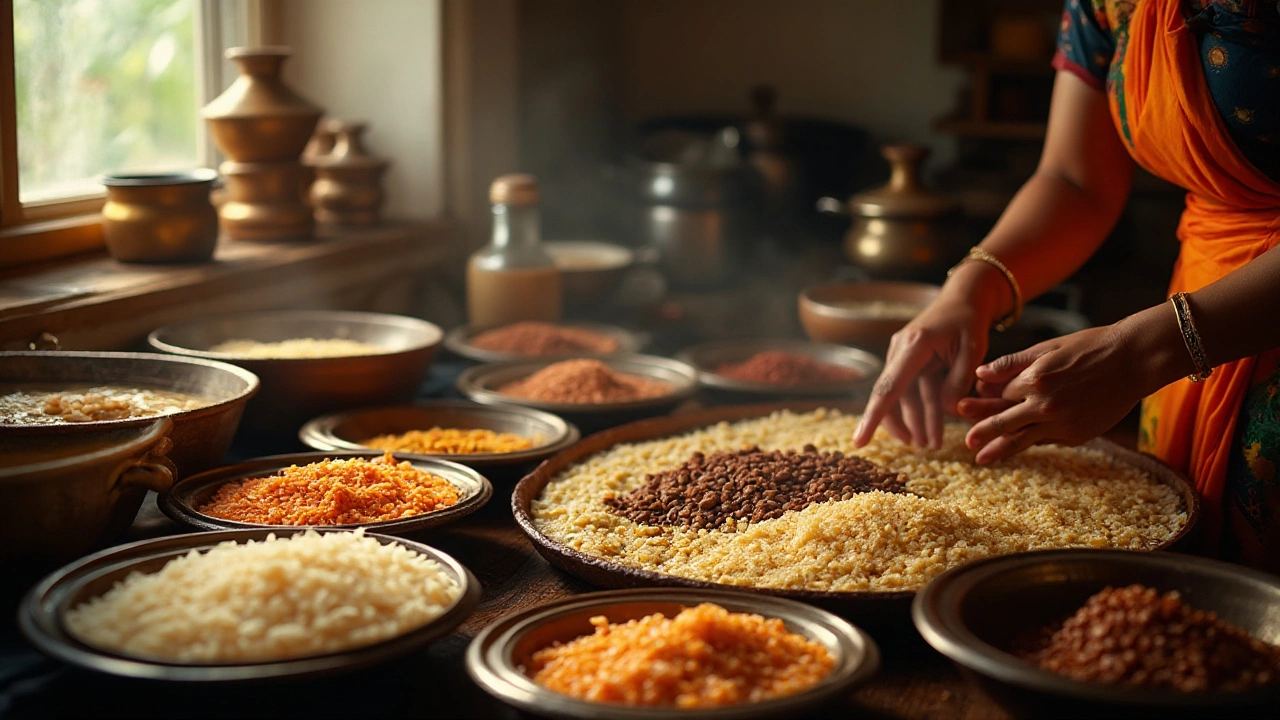Ferment Dosa Batter – Fast Tips, Science & Recipes
When working with ferment dosa batter, the process of letting rice‑lentil mix develop natural acidity and bubbles, which gives dosas their signature tang and fluffiness. Also known as dosa batter fermentation, it is a cornerstone of South Indian cooking and connects directly to ingredients like curd, a probiotic dairy starter that supplies lactic acid bacteria and baking soda, an alkaline leavener that boosts rise when added at the right stage. These components together create the perfect environment for the wild yeasts to work.
The central idea is simple: fermenting dosa batter requires an acidic starter (curd or a bit of old batter) and warm conditions to encourage microbial activity. The science shows that lactic acid bacteria break down starches, releasing sugars that feed yeast. The result is carbon dioxide bubbles that puff up the batter. Adding a pinch of baking soda after fermentation can further light‑en the texture, but only if the batter is already mildly acidic – otherwise the soda neutralises the taste. This balance is why many cooks swear by a short “overnight fermentation” followed by a quick 2‑hour warm‑up for instant dosas.
Quick Hacks and Common Pitfalls
If you’ve ever forgotten to start the batter the night before, you’re not alone. A few tricks can jump‑start the process: use room‑temperature water, mix in a spoonful of store‑bought curd, and keep the bowl in a warm corner (around 30‑35 °C). Stirring the batter a couple of times during the warm‑up helps distribute the microbes evenly. Avoid metal containers – they can inhibit bacterial growth. And remember, too much sugar or salt too early will slow fermentation, so add those after the batter has risen.
These tips tie back to the larger picture: fermenting dosa batter is linked to both traditional methods and modern shortcuts. Whether you rely on a classic overnight rest or a rapid 30‑minute boost, the goal remains the same – a tangy, airy batter ready for a hot skillet. Below you’ll find articles that break down each element, from the role of curd to the science of baking soda, plus step‑by‑step recipes that let you master the art without waiting all night.

Speedy Fermentation: Dosa Batter Without Yeast
Fermenting dosa batter faster without using yeast is totally possible with a few tweaks. Learn how warm environments, optimal soaking times, and alternative ingredients can give you that perfect batter in record time. This guide will provide practical tips, helping you enjoy that crispy dosa whenever you crave it. Whether you're a seasoned cook or a beginner, these steps will simplify your dosa preparation process.

Fast Ways to Ferment Dosa Batter Without Yeast
Fermenting dosa batter quickly without using yeast is a challenge many home cooks face. This guide explores proven methods to speed up the fermentation process, leveraging natural ingredients and specific environmental conditions. You'll learn about ideal temperatures, secret kitchen hacks, and some do's and don'ts to ensure your dosas are always deliciously crispy. Say goodbye to waiting and hello to quicker dosa preparation!

Quick Dosa Batter Fermentation Without Yeast: Tips & Tricks
Fermenting dosa batter quickly without yeast might seem like a tricky task, but it's possible with a few clever techniques. This article will explore practical methods to speed up the fermentation process, including the use of warm environments, soaking lentils properly, and blending in certain additives. Learn how soaking time, temperature, and choosing the right type of rice can impact fermentation. Get ready to make delicious, fluffy dosas without the need for yeast, while enjoying a mix of traditional wisdom and modern culinary insights.